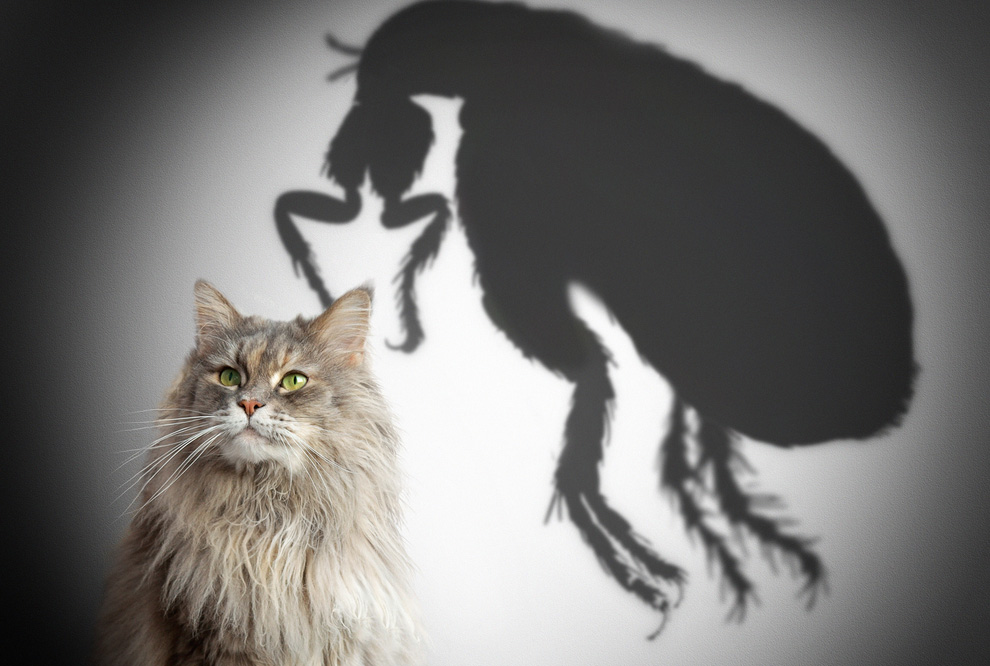What, exactly, are fleas?
Fleas are small brown blood sucking parasitic insects, which means they live in or on another creature (the host) and derive nutrients from the host. They are the most common external parasite found on dogs and cats. Fleas are wingless but they are expert jumpers.
The flea life cycle:
Eggs: Fleas can lay up to 50 eggs a day. These eggs drop off wherever the host spends time, such as furniture, carpet, bedding or your backyard.
Larvae: In 1-10 days, tiny worm-like larvae hatch from the eggs. To avoid sunlight, they crawl into dark, low-traffic areas like under a bush or deep in carpeting.
Pupae: Larvae start spinning small, sticky white cocoons using dust, dirt or carpet fibers. In 10 days they become adults.
Young Adults: Young adults will remain in their cocoons until a host comes by.
Adults: They bite and suck blood in order to live and reproduce. The female cannot reproduce until after her first blood meal.
Diseases carried by fleas….
Tapeworms are the most common disease carried by fleas. Tapeworms are an intestinal parasite which can pass to your dog by eating an infected flea. Fleas also have the potential to carry Typhus and Plague.
How pets get fleas…
Fleas are typically picked up from other animals that have them – but – with that being said, a flea can live more than 100 days without a host so they can be outside living in places like bushes and around trees so your pet can pick them up by just walking outside.
How to know if your pet has fleas…
Fleas can be hard to find depending on your pet’s coat because they are so small and good at hiding. You will probably notice your pet is itching and scratching a lot and sometimes they may bite or chew at themselves. Fleas favorite hangouts include the back of the neck and the belly, try to look closely at these areas and run a flea comb through the coat to see if you catch any fleas or flea dirt – which looks like little black specks of pepper. If you are still not sure you can always come in and have us take a look for you.
Flea Prevention….
Prevention is the most important thing you can do! Before the warmer months get started, protect your pet against fleas. It is the single most important thing you can do to prevent an infestation. We have topical treatments available like Advantix, we also carry Flea Treats, Soresto collars, Vet’s Best all natural flea sprays for pets and home, flea bombs, Diatomaceous Earth and lots of other products. Be sure to wash pet bedding often, vacuum floors, carpet, furniture and the crevices around baseboards regularly. If you know you are in a high flea area and your pet spends time in your yard you can even treat your yard with cedar chips (which fleas hate) and nematodes (worms that eat fleas) from your local gardening store.
Hope this has been helpful! If your flea problem is severe you may need to consult a veterinarian.
